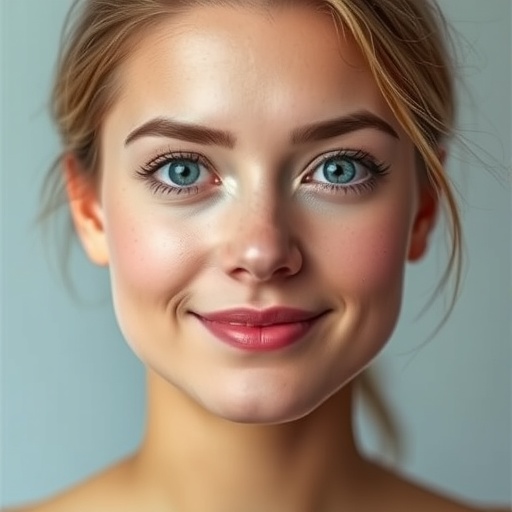In the realm of psychological research and clinical assessments, understanding factors that influence individual satisfaction with one’s own appearance has emerged as a pivotal focus. A groundbreaking study conducted by Opitz, Savage, Talbot, and their colleagues delves into the validity and utility of single-item assessments to measure appearance satisfaction. This innovative approach offers a streamlined yet impactful method for researchers and clinicians aiming to understand body image perceptions across diverse populations.
Traditionally, assessments of appearance satisfaction have relied on multi-item questionnaires that can be lengthy and cumbersome. These extensive measures, while thorough, often discourage participation due to their time-consuming nature. The recent research, titled “Is one item enough?” questions whether a simplified, single-item format could effectively gauge individual satisfaction levels without sacrificing the reliability of the data collected. The study posits that a concise query could serve as a practical tool in numerous settings, potentially reaching a broader population base.
The researchers’ approach involved conducting three separate studies, each designed to test the robustness of their single-item assessments against conventional multi-item scales. By comparing responses from participants across varying demographics, the study sought to determine if an uncomplicated inquiry regarding appearance satisfaction could yield results comparable to established measures. This exploration is particularly relevant as mental health practitioners continuously seek efficient methods for administering assessments that could save time while maximizing the acquisition of valuable data.
An integral aspect of the study was its methodological rigor. Opitz and his team utilized a diverse participant pool, encompassing various age groups, genders, and cultural backgrounds. This diversity not only enhances the generalizability of the findings but also addresses the multifaceted nature of body image and the social constructs surrounding it. By embracing a broad spectrum of perspectives, the researchers aimed to ensure that their findings would apply effectively across different social and cultural contexts.
Interesting patterns emerged from the data analysis, revealing a strong correlation between responses to the single-item question and traditional multi-item instruments. Participants reported similar levels of satisfaction when evaluating their appearance through both formats, suggesting that a single-item assessment could indeed capture the nuances relevant to individual satisfaction. This finding challenges the traditional belief that more extensive measures are inherently more effective in psychological research.
Moreover, the study highlighted the potential implications for clinical practice. For mental health professionals, adopting single-item assessments could streamline the process of evaluating patients’ body image concerns, allowing for more efficient use of therapy time. As the study indicates, practitioners could derive meaningful insights about their clients’ satisfaction with their appearance using just a single question, thereby enabling quicker and potentially more open discussions around sensitive topics such as body image and self-esteem.
Throughout the three studies, participants responded to the single-item question, which asked them to rate their overall satisfaction with their appearance on a numerical scale. Initial reactions shown were overwhelmingly positive, suggesting that individuals felt comfortable and confident enough to share their perceptions. This ease of communication is vital in therapeutic contexts, as it fosters an environment in which individuals feel secure discussing potentially distressing issues linked to their body image.
Furthermore, the implications for research methodologies are profound. Researchers often grapple with recruitment challenges, especially in studies requiring lengthy surveys. The findings of Opitz and his team suggest that a shift towards embracing study designs that utilize single-item assessments can reduce participant fatigue and enhance the overall response rates. By decreasing the burden placed upon participants to navigate extensive questionnaires, this method could result in more robust data collection practices.
Importantly, while the study advocates for the utility of single-item assessments, it does not dismiss the value of multi-item questionnaires entirely. It acknowledges that certain contexts might still necessitate a more extensive evaluation of appearance-related concerns. However, the findings provide substantial evidence that a singular approach can be a viable alternative in situations where speed and efficiency are paramount, such as in initial screenings or in large-scale population studies.
As attention to body image issues grows in contemporary society, so too does the need for accessible, reliable methods of assessment. Through their research, Opitz and colleagues offer a practical solution that aligns with both clinical needs and the demands of modern research. This approach supports the ongoing dialogue surrounding self-perception and body image, opening doors for further investigation into how best to support individuals grappling with these essential aspects of their identity.
In conclusion, the emerging evidence from these studies marks a significant step forward in appearance satisfaction research. By exploring the potential of single-item assessments, this research disrupts conventional thinking while proposing an innovative solution that holds promise for both clinical practice and psychological research. As the field continues to evolve, findings such as this one serve as a reminder of the potential for growth and adaptation in the methods we utilize to understand ourselves and each other within the realm of body image.
The findings from Opitz and colleagues are not just academic; they resonate deeply with everyday experiences. Individuals today are inundated with images, messages, and societal expectations regarding appearance. Simplifying the measurement of satisfaction with appearance could empower more individuals to engage in discussions around body image, self-worth, and mental health. In bridging the gap between research and real-world application, this work paves the way for greater understanding and support for those navigating the complexities tied to their appearances.
As the research landscape evolves, so too does the discourse surrounding mental health and body image. With the insights gleaned from this timely study, we can envision a future where conversations about appearance are not overshadowed by stigma, but rather embraced as essential components of holistic well-being and self-acceptance.
Subject of Research: Single-item assessments of appearance satisfaction
Article Title: Is one item enough? Testing the potential utility of single-item assessments of appearance satisfaction across three studies.
Article References:
Opitz, MC., Savage, N., Talbot, K. et al. Is one item enough? Testing the potential utility of single-item assessments of appearance satisfaction across three studies.
J Eat Disord (2025). https://doi.org/10.1186/s40337-025-01468-8
Image Credits: AI Generated
DOI:
Keywords: Body Image, Appearance Satisfaction, Single-item Assessment, Psychological Research, Clinical Practice, Mental Health.
Tags: appearance satisfaction measurementbody image perception researchclinical assessments of body imagedemographic factors in appearance satisfactioneffectiveness of concise surveysinnovative approaches to body image studiesOpitz Savage Talbot research findingsparticipant engagement in researchsingle-item assessments in psychologystreamlined psychological evaluationstraditional vs. modern assessment methodsvalidity of appearance satisfaction tools





